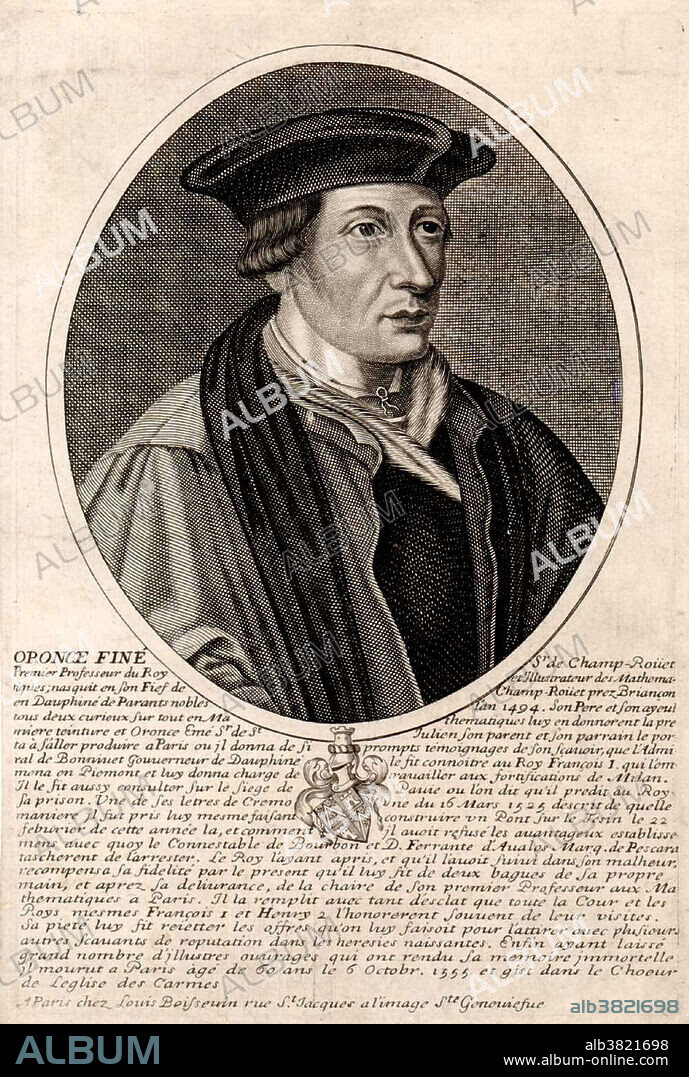alb3821698
Oronce Fine, French mathematician

|
Ajouter à une autre Lightbox |
|
Ajouter à une autre Lightbox |



Avez-vous déjà un compte? S'identifier
Vous n'avez pas de compte ? S'inscrire
Acheter cette image.
Sélectionnez l'usage:

Titre:
Oronce Fine, French mathematician
Légende:
Voir la traduction automatique
Oronce Fine (1494-1555), French mathematician and cartographer. Primarily a popularizer, he was one of the most prolific authors of mathematical books of his age. He worked in a wide range of mathematical fields, including practical geometry, arithmetic, optics, gnomonics, astronomy, and instrumentalism. He gave the value of pi (= 3.1416) to be (22 2/9)/7 = 3.1746 in 1544. Later, he gave 47/15 = 3.1333 and, in De rebus mathematicis (1556), he gave 3 11/78 = 3.1410. In 1542 he published De mundi sphaera (On the Heavenly Spheres), a popular astronomy textbook. His writing on astronomy included guides to the use of astronomical equipment and methods. He also described more recent innovations, such as an instrument he called a metheoroscope (an astrolabe modified by adding a compass). His heart-shaped (cordiform) map projection may be his most famous illustration, and was frequently employed by other notable cartographers, including Peter Apian and
Crédit:
Album / Science Source / Smithsonian Institute Library
Autorisations:
Taille de l'image:
2700 x 4015 px | 31.0 MB
Taille d'impression:
22.9 x 34.0 cm | 9.0 x 13.4 in (300 dpi)
Mots clés:
16E SIECLE • 16EME S • ASTRONOMIE • AUTEUR • AUTEURS • CARTE • CARTOGRAPHE • CARTOGRAPHIE • CÉLÈBRE • CELEBRITE • COEUR • COEURS • CORPS COEUR • EUROPÉEN • HOMME • ILLUSTRATION • MATHEMATICIEN • MATHÉMATIQUE • PERSONNAGES • PERSONNALITÉS • PERSONNE • PORTAIT • PORTRAIT • POTRAIT • SCIENCE: ASTRONOMIE • SCIENCE: CARTOGRAPHIE • SEIZIÈME SIÈCLE • VALEUR • XVIE SIECLE


 Pinterest
Pinterest Twitter
Twitter Facebook
Facebook Copier le lien
Copier le lien Email
Email
